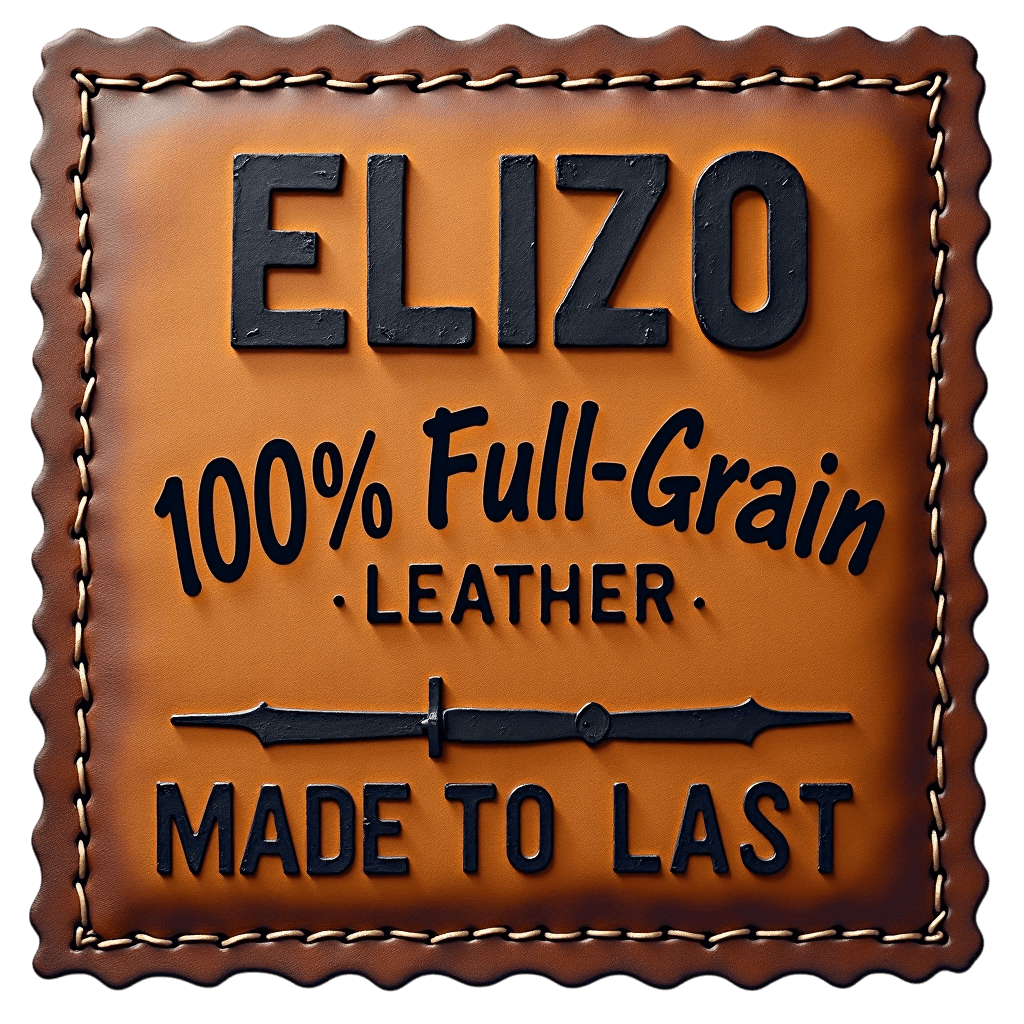The Complete Men's Leather Wallet Buying Guide: Styles, Quality, and Long-Term Value
A man's wallet represents far more than simple storage for currency and cards—it functions as a daily companion, silent statement of personal standards, and practical tool that influences countless daily interactions. The wallet choice communicates subtle messages about attention to quality, organizational preferences, and long-term thinking while serving essential functions that affect everything from payment convenience to professional credibility during business interactions.
The challenge facing modern men lies in navigating an overwhelming array of options while understanding quality differences that significantly impact both immediate satisfaction and long-term value. The decision between a leather wallet that will serve faithfully for decades versus alternatives requiring frequent replacement affects not only financial outcomes but daily convenience and professional presentation throughout career and personal development.
Understanding wallet selection requires analyzing materials, construction techniques, sizing considerations, and functional requirements that vary significantly across different lifestyles and professional contexts. Whether selecting a men's long wallet for comprehensive organization or a minimalist alternative for streamlined carry, the choice process benefits from systematic evaluation that balances immediate needs with long-term satisfaction and value development.
Understanding Wallet Fundamentals
The Evolution of Modern Wallet Design
Contemporary wallet design reflects changing payment methods, lifestyle patterns, and carrying preferences that have evolved dramatically over the past decades. Understanding these changes enables appropriate selection for current needs while anticipating future requirements that affect long-term satisfaction with wallet choices.
Traditional bifold designs dominated for generations through their balance of capacity and portability, but modern payment methods and lifestyle changes have created opportunities for alternative designs that better serve contemporary needs. The men's wallet category now includes options ranging from minimalist cardholders to comprehensive organizers that accommodate diverse requirements.
Card proliferation represents one of the most significant changes affecting wallet design, as modern professionals often carry multiple credit cards, business cards, identification documents, and membership cards that require organized storage and easy access. This reality has driven development of wallet designs that prioritize card organization while maintaining reasonable size and weight.
The shift toward cashless payments has reduced cash capacity requirements for many users while creating new needs for device storage, cable management, and digital backup solutions that some modern wallets address through integrated design features.
Material Science and Leather Quality
Wallet performance depends heavily on material quality that affects durability, aging characteristics, and daily user experience. Understanding leather grades and processing methods enables informed decisions that maximize both immediate satisfaction and long-term value realization through proper material selection.
Full grain leather represents the premium material choice for wallets due to its complete retention of natural grain structure that provides superior durability while developing attractive patina through use. This material choice ensures that quality wallets improve rather than deteriorate with proper use and care.
Top grain leather offers consistent appearance through surface sanding that removes natural imperfections while maintaining good durability characteristics. This processing creates uniform texture suitable for users preferring consistent appearance over natural character development that full grain leather provides.
Split leather and bonded alternatives lack the strength and aging potential necessary for long-term wallet use, making them unsuitable for quality accessories despite lower initial costs. These materials often fail prematurely while providing inferior user experience throughout their shortened service life.
Construction quality affects wallet longevity through stitching techniques, edge finishing, and assembly methods that determine structural integrity under daily stress. Premium wallets utilize hand-stitching or high-quality machine work with appropriate thread selection and stitch density that maintains integrity through years of regular use.
Wallet Styles and Functional Analysis
The Classic Bifold Design
Bifold wallets represent the traditional standard that balances capacity, organization, and portability through time-tested design principles that continue serving diverse user requirements effectively. Understanding bifold advantages and limitations enables appropriate selection for users whose needs align with this classic approach.
The bifold design provides natural organization through multiple compartments that separate bills, cards, and documents while maintaining compact folded dimensions that fit comfortably in most pocket configurations. This organization system becomes intuitive through regular use while providing quick access to frequently needed items.
Bill storage in bifold designs accommodates various currency denominations through appropriately sized compartments that prevent damage while enabling easy access during transactions. The folding mechanism protects currency while maintaining convenient access that supports smooth payment processes.
Card capacity in quality bifold wallets typically accommodates 8-12 cards through dedicated slots that provide secure storage while enabling quick identification and access. This capacity serves most users adequately while maintaining reasonable thickness that supports comfortable pocket carry.
Long Wallet Advantages and Applications
Long wallets provide enhanced capacity and organization through extended dimensions that accommodate additional storage while maintaining single-fold construction that many users prefer over bifold complexity.
The men's long wallet format excels for users requiring extensive card capacity, document storage, or cash organization that exceeds bifold limitations while maintaining organized access to stored items.
Currency storage in long wallets accommodates full-length bills without folding, reducing wear and maintaining crisp appearance that some users prefer for business or formal contexts where bill condition affects professional presentation.
Card organization in long formats typically provides 12-20+ card slots through extended internal layout that serves users with extensive card requirements while maintaining logical organization that supports quick access during use.
Document accommodation represents another long wallet advantage through compartments sized for receipts, business cards, and other papers that require storage alongside standard wallet contents without compromising organization or accessibility.
Minimalist and Slim Wallet Options
Modern lifestyle trends toward simplified carry have created market demand for minimalist wallets that provide essential functions while reducing bulk and weight that traditional designs may impose on users preferring streamlined everyday carry systems.
Minimalist designs focus on essential functions including primary payment cards and identification while eliminating features that many users consider unnecessary for daily requirements. This approach creates wallets that serve primary functions while maintaining extremely compact profiles.
Front pocket carry represents the primary use case for minimalist wallets designed to fit comfortably in front pockets without creating bulk or discomfort during normal activities. These designs often utilize alternative materials or construction techniques that optimize thinness while maintaining durability.
Card capacity in minimalist designs typically ranges from 4-8 cards through carefully engineered layouts that maximize storage efficiency while maintaining access convenience and structural integrity necessary for regular use.
Cash accommodation varies significantly among minimalist designs, with some providing basic bill storage while others eliminate cash capacity entirely in favor of card-only functionality that serves users who rely primarily on electronic payments.
Construction Quality and Durability Factors
Stitching Techniques and Longevity
Wallet construction quality depends heavily on stitching methods that determine structural integrity and longevity under daily stress cycles that gradually weaken inferior construction while quality techniques maintain performance throughout extended use periods.
Hand-stitching represents the premium construction method that creates superior seam strength through individual thread control and tension management that machine stitching cannot match consistently. This technique appears in the highest quality leather wallets where longevity justifies additional labor investment.
Saddle stitching provides exceptional durability through locking thread patterns that maintain integrity even if individual threads break during use. This traditional technique creates seams that often outlast the leather itself while maintaining structural integrity throughout wallet lifetime.
Machine stitching quality varies significantly based on equipment quality and operator skill, with premium production utilizing appropriate thread weights and stitch densities that provide adequate durability for quality wallet construction when properly executed.
Edge finishing affects both appearance and durability through techniques that prevent fraying and moisture penetration while maintaining attractive appearance throughout extended use. Quality wallets feature carefully finished edges that resist wear while contributing to overall aesthetic appeal.
Hardware Integration and Functionality
Wallet hardware including snaps, zippers, and metal reinforcements must withstand repeated stress cycles while maintaining smooth operation and attractive appearance throughout wallet service life.
Snap closures require precise fitting and quality materials that maintain secure closure while operating smoothly through thousands of use cycles. Premium snaps utilize brass or stainless steel construction that resists corrosion while maintaining reliable operation.
Zipper integration affects both security and durability through quality mechanisms that operate smoothly while providing secure closure for important contents. Quality zippers utilize appropriate materials and construction that maintain operation under daily use stress.
Metal reinforcements at stress points prevent premature failure while maintaining wallet structural integrity during extended use periods. These reinforcements should integrate seamlessly with overall design while providing necessary strength enhancement.
Sizing and Capacity Considerations
Pocket Compatibility and Comfort
Wallet sizing must accommodate intended carry methods while maintaining comfort during normal activities that range from sitting and walking to reaching and bending that create stress on both wallet and clothing.
Back pocket carry requires wallets sized to fit comfortably without creating excessive bulk that affects sitting comfort or trouser appearance. Optimal sizing provides necessary capacity while maintaining proportions appropriate for back pocket dimensions.
Front pocket carry typically requires thinner profiles that accommodate front pocket constraints while maintaining access convenience during normal use. These sizing requirements often drive selection toward minimalist designs that prioritize compactness over capacity.
Inside jacket pocket carry enables larger wallets that would be impractical for trouser pocket use while providing secure storage during business and formal occasions where jacket wear provides appropriate carry options.
Weight considerations affect carry comfort particularly for larger wallets with extensive contents that may become burdensome during extended carry periods. Quality materials and efficient design minimize weight while maximizing functionality and durability.
Content Organization and Access
Effective wallet organization enables quick access to frequently needed items while maintaining security for important documents and cards that require protection from loss or theft during daily activities.
Card hierarchy considerations help determine optimal organization systems that place frequently used cards in easily accessible positions while securing less frequently needed items in protected locations within wallet structure.
Bill organization requirements vary based on currency usage patterns and preferences for bill condition maintenance that affect storage method selection and compartment sizing within wallet design parameters.
Document storage needs including insurance cards, emergency contacts, and business cards require dedicated space that maintains organization while protecting important papers from damage during daily carry and use cycles.
Color and Style Selection Strategy
Professional Image Considerations
Wallet color selection affects professional presentation through subtle signals about personal style and attention to detail that influence business relationships and career advancement opportunities throughout professional development.
Black leather provides classic formality appropriate for conservative business environments where traditional appearance supports credibility and professional advancement. Black wallets maintain consistent appearance while developing subtle character through proper use and aging.
Brown leather offers warmth and versatility that works effectively across business casual and formal contexts while providing natural aging characteristics that many users find appealing as wallets develop patina through regular use.
Cognac and tan leather colors provide distinctive character while maintaining professional appropriateness for most business contexts. These colors often develop particularly attractive patina that enhances wallet appearance over time while maintaining business utility.
Navy and burgundy alternatives offer subtle distinction while maintaining professional credibility appropriate for users seeking personality expression within conservative business parameters.
Personal Style Expression
Wallet selection provides opportunities for personal expression through color and design choices that reflect individual preferences while maintaining appropriateness for lifestyle and professional requirements.
Classic styling emphasizes timeless design elements that transcend fashion trends while providing long-term satisfaction through enduring appeal that justifies investment in quality construction and materials.
Contemporary design elements may incorporate modern proportions or details that appeal to users preferring current styling while maintaining functionality and quality standards necessary for long-term satisfaction.
Personalization through custom leather goods enables unique expression while maintaining professional appropriateness through subtle customization that reflects personal identity without compromising business utility.
Investment Analysis and Value Proposition
Cost-Per-Use Calculation
Quality wallet investment requires understanding total cost of ownership that includes initial purchase price, maintenance requirements, and replacement frequency that affects long-term financial outcomes significantly.
Premium leather wallets typically provide 15-25 years of service with proper care, creating daily use costs that often prove superior to multiple replacements of lower-quality alternatives over equivalent time periods.
Maintenance costs for quality wallets remain minimal through simple care routines that preserve appearance and functionality while extending service life significantly beyond inadequately maintained alternatives.
Replacement avoidance represents significant value through reduced shopping time, decision-making burden, and adaptation periods required when changing wallets frequently rather than investing in long-term quality solutions.
Professional benefits from quality wallet ownership may include enhanced credibility and positive impression formation that supports career advancement worth far more than initial accessory investment costs.
Quality Indicators and Selection Criteria
Investment-grade wallets possess specific characteristics that distinguish them from adequate alternatives while ensuring long-term satisfaction and value retention throughout ownership periods.
Material quality assessment requires understanding leather grades and processing methods that affect both immediate satisfaction and long-term performance characteristics that justify premium pricing through superior results.
Construction evaluation focuses on stitching techniques, edge finishing, and hardware integration that determine durability and functionality throughout extended use periods under normal stress conditions.
Design quality considers proportion, organization, and aesthetic elements that affect both immediate appeal and long-term satisfaction as needs and preferences evolve throughout wallet ownership periods.
Brand reputation influences both initial quality expectations and potential resale value that quality manufacturers maintain through consistent excellence and customer service that supports long-term satisfaction.
Care and Maintenance for Longevity
Daily Use Best Practices
Proper wallet use patterns significantly affect longevity and appearance development while preventing common problems that can compromise functionality and aesthetic appeal throughout ownership periods.
Content management prevents overstuffing that can distort wallet shape while reducing stress on seams and closures that maintain structural integrity when properly loaded within design parameters.
Pocket rotation distributes wear patterns while preventing localized stress concentration that can cause premature failure in specific areas while maintaining overall wallet condition and appearance.
Handling techniques minimize unnecessary stress while ensuring smooth operation of closures and card access that maintains functionality throughout extended use periods under normal conditions.
Environmental protection prevents damage from moisture, extreme temperatures, and chemical exposure that can compromise leather condition and accelerate deterioration beyond normal aging patterns.
Professional Maintenance and Restoration
Advanced care techniques and professional services can extend wallet life while maintaining appearance that justifies initial quality investment through comprehensive maintenance programs.
Cleaning protocols remove accumulated soil and oils while maintaining leather condition that supports continued use and aging development without compromising structural integrity or aesthetic appeal.
Conditioning schedules maintain leather suppleness while preventing cracking and premature aging that can compromise both appearance and functionality when maintenance requirements are neglected over time.
Professional restoration services can address wear patterns, color fading, and structural issues that threaten continued utility while maintaining authentic character that replacement cannot provide effectively.
Storage considerations protect wallets during non-use periods while maintaining optimal conditions for leather preservation and natural aging that enhances rather than compromises wallet character development.
The selection of a quality men's leather wallet represents a strategic decision that affects daily convenience, professional presentation, and long-term value realization through informed choice-making that balances immediate requirements with extended satisfaction potential. Whether choosing a traditional leather wallet, an extended long wallet, or exploring personalized options that reflect individual identity, the investment in quality accessories provides returns through enhanced daily experience and professional credibility that justify careful selection and proper maintenance throughout ownership periods.
Understanding quality indicators, construction techniques, and value relationships enables confident wallet selection that serves both practical needs and personal satisfaction while developing character and appreciation that makes quality leather accessories increasingly valuable rather than simply functional throughout their extended service lives.


